On this page
Books about HoneyguidesThis page lists books that are totally or partially about Honeyguides. The books are listed in order of publication date with the most recent at the top.
Honeyguides
Spotted Honeyguide
Indicator maculatus
Scaly-throated Honeyguide
Indicator variegatus
Greater Honeyguide
Indicator indicator
Malaysian Honeyguide
Indicator archipelagicus
Lesser Honeyguide
Indicator minor
Thick-billed Honeyguide
Indicator conirostris
Willcocks's Honeyguide
Indicator willcocksi
Least Honeyguide
Indicator exilis
Dwarf Honeyguide
Indicator pumilio
Pallid Honeyguide
Indicator meliphilus
Yellow-rumped Honeyguide
Indicator xanthonotus
Lyre-tailed Honeyguide
Melichneutes robustus
Yellow-footed Honeyguide
Melignomon eisentrauti
Zenker's Honeyguide
Melignomon zenkeri
Cassin's Honeyguide
Prodotiscus insignis
Green-backed Honeyguide
Prodotiscus zambesiae
Wahlberg's Honeyguide
Prodotiscus regulus
|
|
|
|
Toucans, Barbets, and Honeyguides: Ramphastidae, Capitonidae and IndicatoridaeLester Short and Jennifer Horne
Colour plates: Albert Earl Gilbert
Oxford University Press
2001
630 pages, 80pp colour plates, numerous maps and line illustrations
"This book covers in unmatched detail the life history, relationships, biology, and conservation of all the world's toucans, barbets, and honeyguides. These number 133 species, found in tropical regions around the world. The toucans are especially well-known because of their dramatic bills and their association with the Amazon rainforest. The authors have been working with these birds for over 20 years, and their knowledge and expertise in these groups is unrivalled. Much of the information in this book has never previously been published."
|
Buy from amazon.co.uk 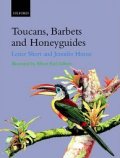
|
|
Host-parasite Evolution: General Principles and Avian ModelsEditor: Dale H. Clayton and Janice Moore
Oxford University Press
2001
From the rear cover: Current interest in host-parasite interactions is spread across many disciplines - immunology, evolution, ecology, endrocrinology, sexual selection, bahavoir, and organismal parasitology. Host-Parasite Evolution is a comprehensive review that bridges the gap between evolutionary biologists and parasitologists. Some chapters deal with conceptual issues, such as demography or sexual selection; others present nuts-and-bolts information about parasites themselves and methods used to study them. Because birds have figured prominently in much evolutionary work on host-parasite interactions, the emphasis is on avian systems, but other systems are included where relevant. It will be an invaluable reference for students and researchers from a wide range of disciplines interested in understanding host-parasite interactions."
Chapter 1 - Introduction; Part I: General Principles; Chapter 2 - Parasite-mediated natural selection; Chapter 3 - Immune defence: genetic control; Chapter 4 - Behavioural defence; Chapter 5 - Parasite-mediated sexual selection: endocrine aspects; Chapter 6 - Parasitism and the evolution of host life history; Chapter 7 - Host-parasite processes and demographic consequences; Chapter 8 - The role of parasites in bird conservation; Chapter 9 - Community ecology of parasites and free-living animals; Chapter 10 - Comparative studies of host parasite communities; Chapter 11 - Host-parasite cospeciation: history, principles and prospects; Chapter 12 - Host-parasite cospeciation, host switching and missing the boat; Part II: Avian Models; Chapter 13 - Birds as habitat for parasites; Chapter 14 - Viruses, bacteria and fungi of birds; r s1hapter 15 - Protozoa, helminths and arthropods of birds; Chapter 16 - Avian brood parasites; Chapter 17 - Conclusion: Evolution of host-parasite interactions.
A large part of chapter 16, Avian Brood Parasitism, is concerned with Honeyguides. |
Buy from amazon.co.uk 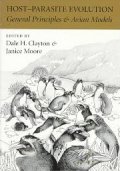
|
|
The Avian Brood Parasites: Deception at the NestPaul A. Johnsgard
Oxford University Press
1997
"The evolutionary, ecological and behavioral questions posed by obligate brood parasites are among the most intriguing of all contemporary ornithological topics. Avian brood parasites lay their eggs in the nests of other birds and may be a major contributing factor driving several species of songbirds to near extinction. As one of the first books to present a comprehensive overview of this fascinating phenomenon, this work discusses the comparative biology and co-evolutionary adaptations exhibited by the five families of birds that engage in such behavior. Several chapters dealing with the comparative biology of both intraspecific and interspecific brood parasites, are followed by individual accounts of all known species - nearly 100 altogether, primarily cowbirds and cuckoos. Some of the more remarkable behavioral and structural adaptations of these birds include egg mimicry, juvenile mimicry, elimination by starvation or actual attack of other nestlings or host eggs, and even the learning and partial mimicry of host song traits. An extended glossary, a list of Latin names, 400 literature citations and range maps of all parasitic species discussed are also included. Detailed line drawings by the author enhance this synthesis of biological and ecological information."
Includes a section on Honeyguides which discusses 17 species. |
Buy from amazon.co.uk 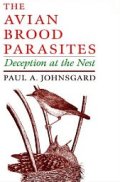
|
|
Advances In Our Knowledge Of The Honey-guidesHerbert Friedmann
Smithsonian Institution Press
1958
|
 |
|
The Honey-guidesHerbert Friedmann
Illustrations: Walter A. Weber
U. S. National Museum Bulletin 208
Smithsonian Institution Press
1955
292 pages.
|
Buy from amazon.co.uk 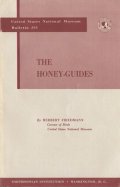
|
|
Catalogue Of The Picariae In The Collection Of The British MuseumCatalogue Of The Birds In The British Museum, Volume XIX
Scansores and Coccyges: P.L. Sclater
Indicatoridae, Capitonidae, Cuculidae and Musophagidae: G.E. Shelley
Colour plates: J. Smit (4), J.G. Keulemans (9)
Printed By Order Of The Trustees
Sold by: Longman & Co.; B. Quaritch; Kegan Paul, Trench, Trubner & Co.; and at the British Museum (Natural History)
1891
From the preface: "The present volume contains an account of the remaining families of the suborder Scansores, and of those of the suborder Coccyges. The arrangement of three of these families, which are entirely composed of Neotropical forms, was undertaken by Mr. P. L, Sclater, that of the remainder by Captain G. E. Shelley. The numbers of species of the several families, and of the specimens at present in the Collection of the British Museum, are as follows: Indicatoridae, 12; Capitonidae, 112; Rhamphastidae, 59; Galbulidae, 21; Bucconidae, 43; Cuculidae, 176; Musophagidae, 25. Of the 448 species recorded, 32 are not represented in the Museum; but besides the 73 types of species admitted as valid, the Collection contains 50 other typical specimens the names of which are now relegated to the synonymic lists. Of donations not already mentioned on former occasions, I have to refer to the two following, which were specially useful in supplementing the series of specimens catalogued in the present volume: the entire collection of Cuckoos formed by Mr. H. Seebohm, and consisting of 539 specimens; and a valuable series of South-African birds collected by T. and W. Ayres in Natal and the Transvaal for the late Mr. J. H. Gurney, and presented by his son."
|
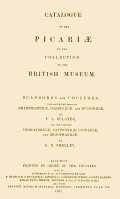
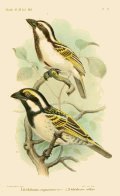
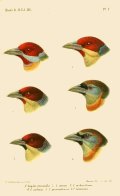 |
|